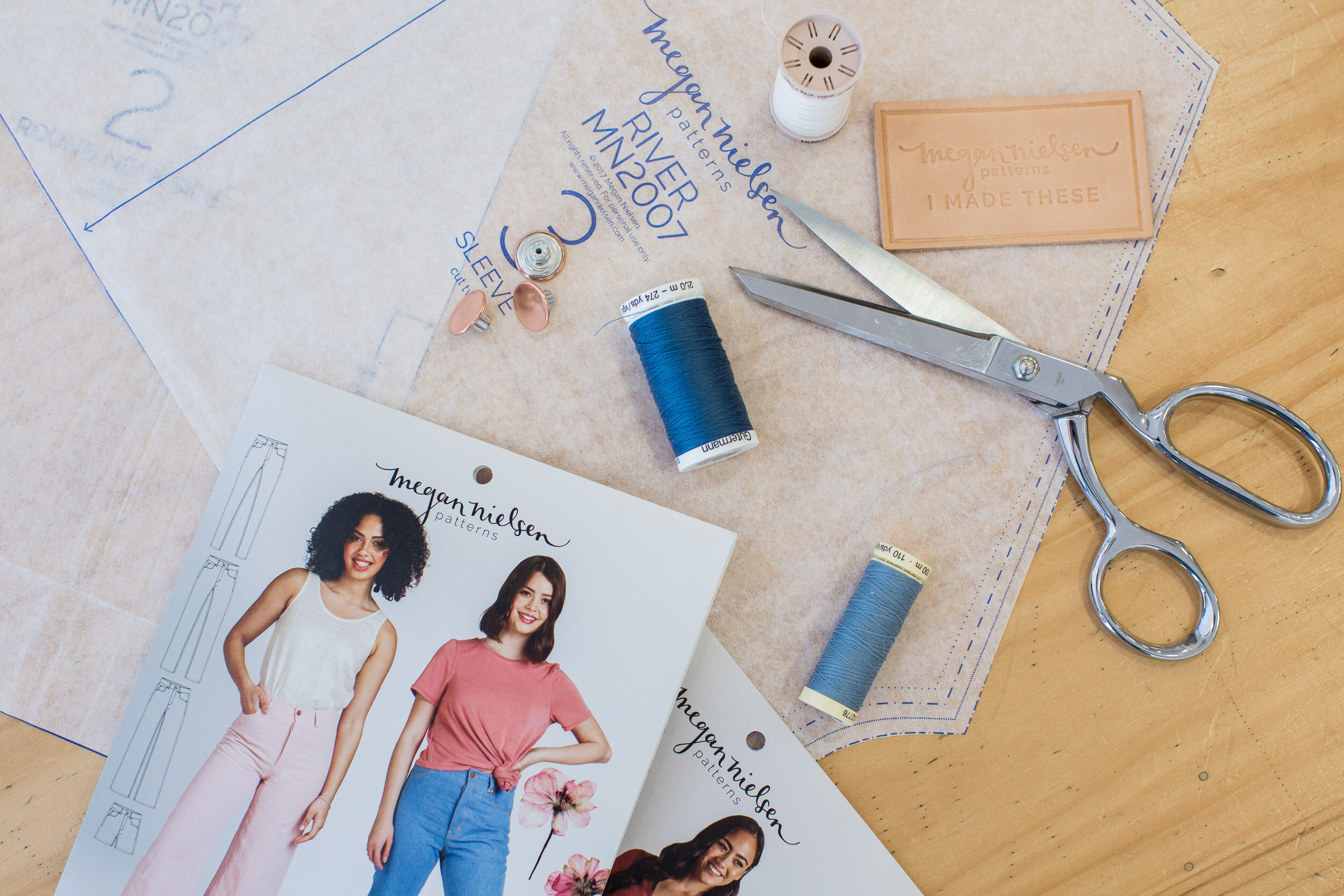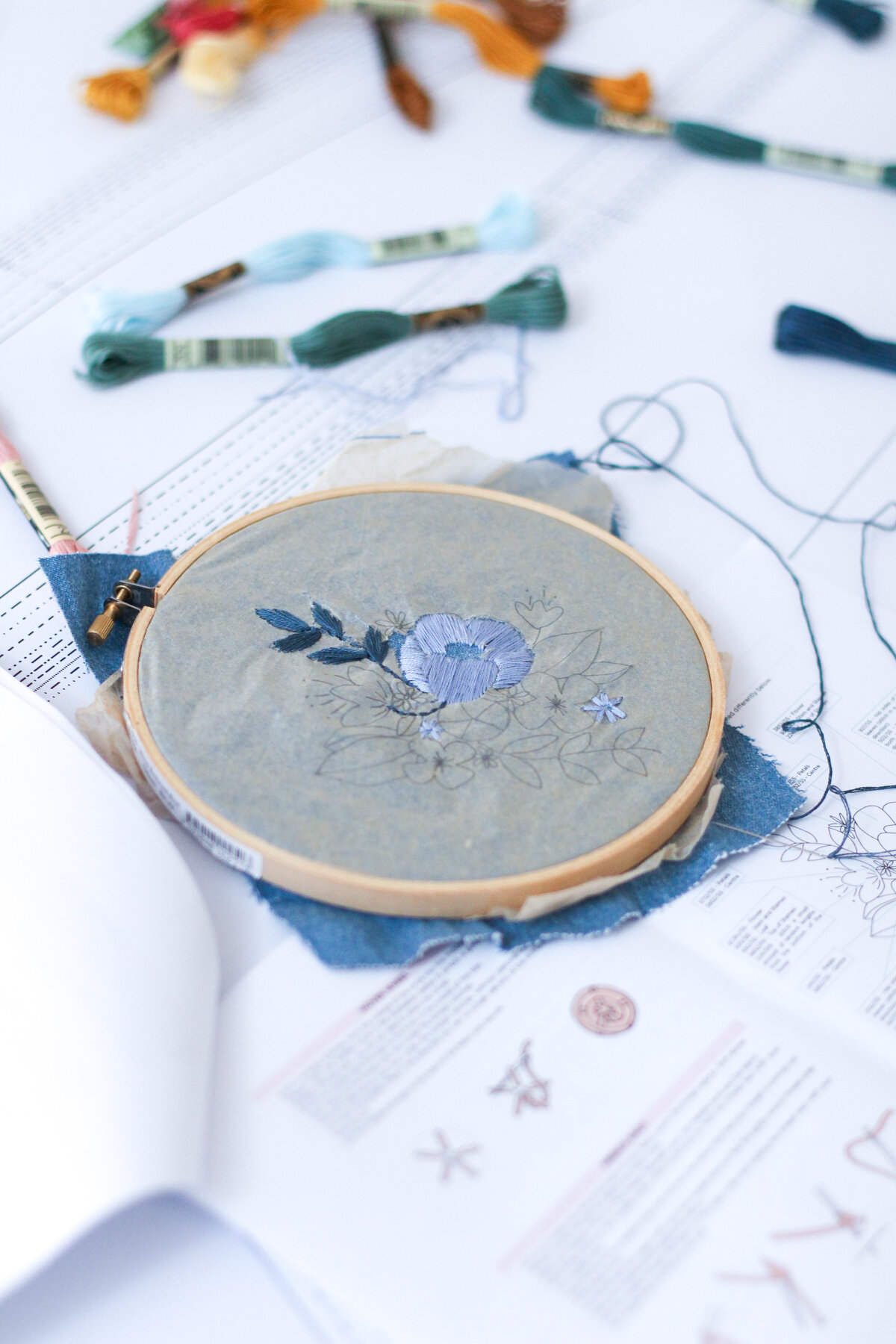Crafting a moment of mindfulness - How to find time to be mindful when life is busy
CRAFTING A MOMENT OF MINDFULNESS
By Joyce Chong, Clinical Psychologist and Megan Nielsen
Mindfulness. Since our clinical psychologist Annie first wrote in her article Confessions of a Mindfulness Sceptic way back in 2016, research supporting the benefits of mindfulness across a range of populations and presenting concerns has continued to explode[1][2][3]. We have seen a proliferation of mindfulness activities in our collective consciousness – mindful eating, mindful walking, mindful meditation, mindful communication, mindfulness-based stress reduction, mindfulness based cognitive therapy. There are apps, blogs, and workshops all designed to help us become more mindful, be more present, and be more relaxed. And yet… in our busy, modern-day lives, is mindfulness just another thing that we should be doing, yet another additional wellbeing activity to get on top on?
(Even more reasons) Why we should get into mindfulness
Mindfulness is not a flash in the pan, it’s not a fleeting fad. It has its roots in Eastern religion, and was brought sharply into secular focus by Jon Kabat-Zinn (most famously through Mindfulness-Based Stress Reduction). Over the years, it has exploded in popularity due to its many benefits, including:
Improvements in physical health[9]
Yet…often when we know we should do something, we may experience mild resistance, or feel overloaded by mindfulness being yet. another. thing. on our ever-expanding To Do list when we are already overwhelmed by our busy schedules. So…what’s the solution when you don’t have a solid hour each day to focus on meditating?
Crafting moments of mindfulness in a busy schedule
Well, here at The Skill Collective we’re BIG fans of practicality, and if that means finding ways to incorporate mindfulness into everyday routines, we’re all for it. Everyday mindfulness is about performing everyday activities with intent to be mindful and ‘all in’ with your focused attention. Easy ways to engage in everyday mindfulness include mindful eating and mindful walking, being mindful on your commute to and from work, or even mindfully brushing your teeth or washing your hair.
But if we are looking to supercharge our mindfulness activities, then why not dip into those types of activities many of us have in our back pocket… our hobbies. Many of us have some sort of hobby that we enjoy, and find meaningful to us. In fact, hobbies are an ideal choice for practising mindfulness because:
We’re more likely to engage with them because we are already interested in them, find them enjoyable, allow us to be creative, and give us a sense of achievement. This is a great contrast to the passive down time we get by flopping on the couch and scrolling through social media.
They often require our minds to focus on what we are doing, which enables us to tune out of worries and rumination that may otherwise consume our attention.[10]
Hobbies often have a repetitive element to them (e.g. practising a musical piece, weeding the garden, writing or journaling, hiking, practising a golf swing, kneading bread, knitting a sweater), and animal studies have shown that repetitive movements are linked to increases in serotonin and dopamine which adds to the feel-good factor.[11][12][13]
Indeed, when we look at research into mindfulness in what we could consider hobby-based activities we find a strong link between mindfulness and improvements to wellbeing in the literature on art therapy, with increasing focus into the benefits of crafts such as knitting, sewing, and mending on improved wellbeing and decreased stress levels. [14][15][16]
How do we ‘do’ mindfulness when it comes to hobbies?
If the manner in which you’re most familiar with mindfulness is through mindfulness meditation, as popularised by apps such as Headspace and Smiling Mind, applying everyday mindfulness to your hobbies may take a bit of practice. For any activity, being mindful means:
Paying attention in a particular way so you’re noticing feedback from all of your senses
…on purpose so you’re attuned to what you’re doing, and not much else
…in the present moment, rather than on a conversation you had yesterday or what you’ll make for dinner tonight
…and non-judgementally such that you’re noticing and describing, rather than judging experiences as being positive or negative.
And that’s it, really! Of course, while it sounds simple, mindfulness can be tricky. Your mind will wander, and you may notice unpleasant sensations, thoughts, and negative emotions come to the fore. That is fine, and part of mindfulness. Through regular practice, it will become easier to redirect your focus to the task at hand.
Now for a deep dive into ‘doing’ mindfulness when it comes to hobbies, we’ll hand over now to the amazing Meg Nielsen from Megan Nielsen Patterns to show us how it’s done. Not only is Meg an amazing pattern designer who lives and breathes all things sewing-related, she is a big believer in good psychological health and resilience. From what started out as a hobby, Meg has turned it into a passion, a business (did we mention she was named in the 2020 40 Under 40 Business Award in Western Australia?), and also built an amazing sewing community around her which also goes to show the benefits (not just mindfulness-based!) that hobbies can bring.
Hi, I’m Meg from Megan Niesen Patterns, and I’m thrilled to share with you the many ways in which sewing helps with mindfulness, mental health and wellbeing.
I have a tendency to stress, overthink, ruminate and allow the worries of the day, life and world in general take over my mind. Intentionally removing my mental attention from these negative pursuits is something that I have actively been learning to do over many years – and will probably continue to keep learning throughout my life.
Along with prioritizing intentional prayer and quiet moments each morning, engaging with creative hobbies and participating in the creative community have been integral to my mental health.
There are so many ways that I’ve found my creative hobbies help me to remain mindful and connected and I’m excited to share few today!
Mindfulness when learning something new
I will often pick up a new creative hobby as I seek out the “beginner state” – that period of time where you don’t know what you are doing and are learning and engrossed. I love the beginner state and I find the state of learning naturally mindful. Since you don’t know what you’re doing when it comes to learning a new skill, you more naturally need to focus on the task at hand with an open purposeful attitude. I’ve learnt knitting, screen printing, shoe making, crochet, quilting, embroidery, sketching, painting and of course garment sewing (my true love). Beyond the initial state of learning, I find that in general I think sewing and crafting are full of activities that if done mindfully are incredibly restful. I find all stages of the process of making something fully engaging, and they force me to focus my attention on the present with a purpose and often include repetitive quiet actions.
Mindfulness when planning my next project
For anyone who sews, ironing and cutting your fabric before you begin sewing can often be considered an inconvenience before a project can begin. But I look forward to this preparation stage and I often use this time to be more mindful and present, in the place of more passive relaxation like watching tv. I tend to save my cutting out for the evenings when my children are asleep. I enjoy the process of wiping down my dinner table, carefully ironing and pressing the fabric, laying pattern pieces out, pinning and thoughtfully cutting. I’m known for my love of carefully matching stripes and prints in fabric, and part of the reason I do it so often is an intentional decision not just to enjoy the challenge, but knowing how much it engrosses my attention. It’s hard for your mind to wander when you are fully focused on matching stripes! An evening spent carefully preparing and cutting out fabric leaves me more calm and ready for sleep than anything else, as well as fully prepared to tackle my sewing project when I next have the time to.
Mindfulness in activity - Removing distractions.
I am an extrovert by nature, I really enjoy human interaction and have never enjoyed being on my own, but I’m learning the important of intentional quiet. When engaging in a hobby for relaxation I like to remove all distractions like the tv, music or being near other people. Ideally I find making something in a quiet room or during the evenings on my own allows me to give my full attention to the task and helps me remain more relaxed.
Mindfulness in activity - Embroidery and hand sewing
My number one go to activity for hobby based mindfulness is hand sewing. I will often choose to hand sew a hem or add embroidery to a project knowing that it will force me to sit quietly with a cup of tea and focus on the task.
One such activity is Sashiko stitching, which at its core is repetitive and asks the maker to focus on the rhythm of stitching whilst appreciating the materials and connecting with what you are making. As you can see from the photos below, Sashiko is a series of simple stitches, done repetitively.
Sashiko is the perfect activity for a spot of mindfulness for me because:
I focus on just a few simple elements: The feel of the fabric, the delicate thread, the needle, and the repetitive movement of my hand stitching.
The repetitive needle action is incredibly soothing, and I often look up surprised to see how much time has passed.
In addition to Sashiko stitching, there are plenty of other forms of sewing and embroidery projects that I’ve dipped into this past year to help me remain mindful and restful. Here are some other examples of me crafting my moments of mindfulness!
lf you’re keen to learn more about mindfulness and sewing, or to see me deep in Sashiko stitching, head on over here and here. Here’s to crafting many more mindful moments!
REFERENCES
[1] Querstret, D., Morison, L, Dickson, S., Cropley, M., John, M. (2020). Mindfulness-based stress reduction and mindfulness-based cognitive therapy for psychological health and well-being in nonclinical samples: A systematic review and meta-analysis. International Journal of Stress Management, 27, 394-411.
[2] Sanada, K., Montero-Marin, J., Barcelo-Soler, A., Ikuse, D., Ota, M., Hirata, A., Yoshizawa, A., Hatanaka, R., Valero, M., Demarzo, M., Campayo, J.G., & Iwanami, A. (2020). Effects of mindfulness-based interventions on biomarkers and low-grade inflammation in patients with psychiatric disorders: A meta-analytic review. International Journal of Molecular Sciences, 21, 2484.
[3] Goldberg, S.B., Riordan, K.M., Sun, S., & Davidson, R.J. (2021). The empirical status of mindfulness-based interventions: A systematic review of 44 meta-analyses of randomized controlled trials. Perspectives on Psychological Science: A journal of the Association of Psychological Science doi: 10.1177/1745691620968771.
[4] Chiesa, A., Calati, R., Serretti, A. (2011). Does mindfulness training improve cognitive abilities? A systematic review of neuropsychological findings. Clinical Psychology Review, 31, 449-464.
[5] Chambers, R., Lo, B.C.Y., & Allen, N.B. (2007). The impact of intensive mindfulness training on attentional control, cognitive style, and affect. Cognitive Therapy and Research, 32, 302-322.
[7] Carsley, D., & Heath, N.L., (2018). Effectiveness of mindfulness-base colouring for test anxiety in adolescents. School Psychology International, 1-22. doi: 10.1177/0143034318773523 journals.sagepub.com/home/spi
[8] Segal, Z.V., Williams, J.M.G., Teasdale, J.D. (2002). Mindfulness-based cognitive therapy for depression: A new approach to preventing relapse. Guilford Press.
[9] Pascoe, M.C., Thompson, D.R., Jenkins, Z.M., & Ski, C.F. (2017). Minfulness mediates the physiological markers of stress: Systematic review and meta-analysis. Journal of Psychiatric Research, 95, 156-178.
[10] Wharton, E., & Kanas, N. (2019) Mindfulness-Based Stress Reduction for the Treatment of Anxiety Disorders, International Journal of Group Psychotherapy, 69, 362-372, doi: 10.1080/00207284.2019.1599289
[11] Lambert, K.G. (2006). Rising rates of depression in today’s society: Consideration of the role of effort-based rewards and enhanced resilience in day-to-day functioning. Neuroscience and Biobehavioral Reviews, 30, 497-510.
[12] Jacobs, B., 1994. Serotonin, motor activity and depression-related disorders. American Science, 82, 456–463.
[13] Treadway, M.T., & Lazar, S.W. (2009), The neurobiology of mindfulness. In F. Didonna (ed.). Clinical Handbook of Mindfulness. Springer.
[14] Monti, D. A., Peterson, C., Kunkel, E. J. S., Hauck, W. W., Pequignot, E., Rhodes, L., et al. (2006). A randomized, controlled trial of mindfulness-based art therapy (MBAT) for women with cancer. Psychooncology 15, 363–373. doi: 10.1002/pon.988
[15] Hinchey, L. M. (2018). "Mindfulness-Based Art Therapy: A Review of the Literature." Inquiries Journal, 10(05). Retrieved from http://www.inquiriesjournal.com/a?id=1737
[16] Twinnger Holroyd, A. (2016). Perceptions and practices of dress-related leisure: shopping, sorting, making and mending. Annals of Leisure Research, 19, 275-293. https://doi.org/10.1080/11745398.2015.1111148












Mindfulness is now firmly entrenched in our consciousness, but how can we find a moment to fit mindfulness into our busy modern day lives?